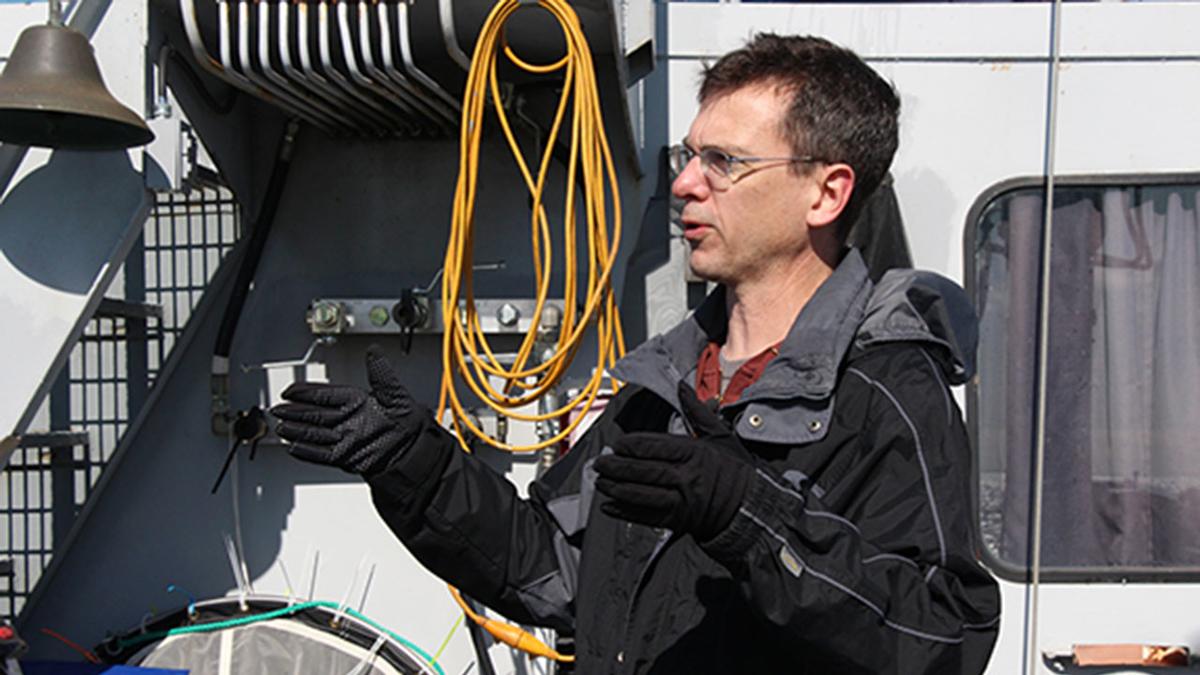Climate change is rapidly warming lakes around the world, threatening freshwater supplies and ecosystems, according to a new study spanning six continents.
More than 60 scientists took part in the research, including University of Minnesota Duluth (UMD) faculty. The study results were published in the journalGeophysical Research Letters and announced today at the fall meeting of the American Geophysical Union.
UMD professor and co-author Jay Austin contributed Great Lakes data to the study. “Several years ago, a couple of us at UMD documented warming trends across the Great Lakes. Other authors have published similar results for individual lakes or sets of lakes around the world,” said Austin. “This study gives credence to the idea that this is a global phenomenon, not just local. Lakes, in some sense, are ideal for looking at these changes over time.”
The study found lakes are warming an average of 0.61 degrees Fahrenheit, each decade. That’s greater than the warming rate of either the oceans or the atmosphere, and according to the scientists involved, it can have profound effects. At the current rate, algal blooms, which can ultimately rob water of oxygen, are projected to increase 20 percent in lakes over the next century. Algal blooms that are toxic to fish and animals would increase by five percent. And these rates imply that emissions of methane, a greenhouse gas 25 times more powerful than carbon dioxide, will increase four percent over the next decade.
“Lakes are important because society depends on surface water for the vast majority of human uses,” said co-author Stephanie Hampton, director of Washington State University’s Center for Environmental Research, Education and Outreach. “Not just for drinking water, but manufacturing, for energy production, for irrigation of our crops. Protein from freshwater fish is especially important in the developing world.”
Temperature is one of the most fundamental and critical physical properties of water. It controls a host of other properties including intricate living processes that have evolved within strict boundaries. When the temperature swings quickly and widely from the norm, life forms in a lake can change dramatically and even disappear.
“These results suggest that large changes in our lakes are not only unavoidable, but are probably already happening,” said lead author Catherine O'Reilly, associate professor of geology at Illinois State University. Earlier research by O’Reilly has shown declining productivity in lakes with rising temperatures.
Funded in part by NASA and the National Science Foundation, the study is the largest of its kind and the first to use a combination of long-term hand measurements and temperature measurements made from satellites, offsetting the shortcomings of each method. Satellite measurements provide a broad view of lake temperatures over the entire globe. But, they only measure surface temperature, while hand measurements can detect changes in temperature throughout a lake. Also, satellite measurements go back only 30 years while some lake measurements can go back more than a century.
A total of 235 lakes were monitored for at least 25 years. While that’s a fraction of the world’s lakes, they contain more than half the world’s freshwater supply.
The researchers said various climate factors are associated with the warming trend. In northern climates lakes are losing their ice cover earlier, and many areas of the world have less cloud cover, exposing their waters more to the sun’s warming rays.
The study shows that many lake temperatures are rising faster than the average air temperatures. Some of the greatest warming is seen at northern latitudes, where rates can average 1.3 degrees Fahrenheit, per decade. Warm-water, tropical lakes may be seeing less dramatic temperature increases, but increased warming of these lakes can still have large negative impacts on fish. That can be particularly important in the African Great Lakes, home to one-fourth of the planet’s freshwater supply and an important source of fish for food.
Austin added “One of the really robust signals we’re seeing in the Great Lakes is a significant reduction in ice, notwithstanding the last two winters. There’s still a long term trend towards lower ice on the Great Lakes”.
In the paper, the authors emphasized that, “In general, this study signals the urgent need to take into account this pervasive and rapid warming when looking at vulnerability assessments and adaptation efforts for lakes.”
As part of UMD’s Large Lakes Observatory (LLO), Austin regularly conducts research on large lakes around the world, with an emphasis on the Great Lakes. LLO is a research institution within UMD’s Swenson College of Science and Engineering (SCSE). For more information, visit http://www.d.umn.edu/llo/.
In 2015, SCSE enrolled 3,102 undergraduate and 221 graduate students. The College is home to ten academic departments, in addition to the LLO, the UMD Air Force ROTC program, and the Iron Range Engineering program, and connects students with hands-on research opportunities through its collaboration with multiple research institutions and area businesses. To learn more about SCSE visit: http://www.d.umn.edu/scse/. The University of Minnesota Duluth’s mission is to integrate liberal education, research, creative activity, and public engagement and prepare students to thrive as lifelong learners and globally engaged citizens.
